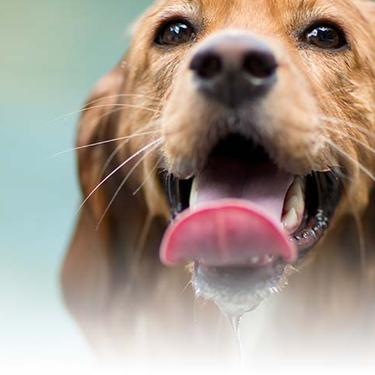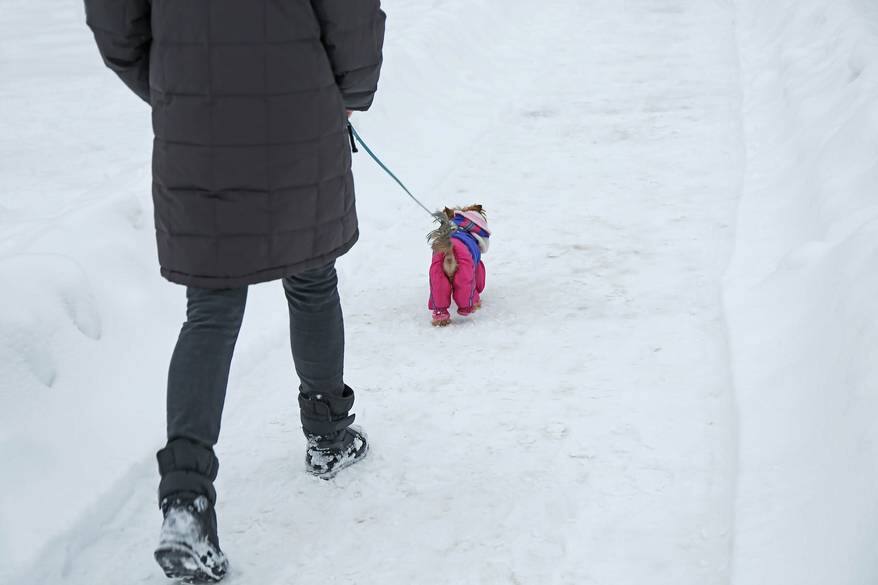
-
Find the right food for your pet
Take this quiz to see which food may be the best for your furry friend.
Find the right food for your pet
Take this quiz to see which food may be the best for your furry friend.
Featured products
 Adult 7+ Perfect Digestion Chicken, Whole Oats & Brown Rice Recipe Dog Food
Adult 7+ Perfect Digestion Chicken, Whole Oats & Brown Rice Recipe Dog FoodScience Diet's breakthrough nutrition supports ultimate digestive well-being & healthy microbiome for dogs age 7+
Shop Now Adult Perfect Weight & Joint Support Chicken Recipe Dry Dog Food
Adult Perfect Weight & Joint Support Chicken Recipe Dry Dog FoodThis weight management and mobility support dog food was created with Hill’s unique understanding of the biology of overweight dogs.
Shop Now Adult 7+ No Corn, Wheat, Soy Chicken & Brown Rice Dog Food
Adult 7+ No Corn, Wheat, Soy Chicken & Brown Rice Dog FoodSupports energy level and beautiful coat in mature dogs
Shop NowFeatured products
 Perfect Weight Salmon & Vegetable Canned Cat Food
Perfect Weight Salmon & Vegetable Canned Cat FoodOver 70% of cats lost weight within 10 weeks when fed this nutrition
Shop Now Adult Perfect Digestion Chicken, Barley & Whole Oats Recipe Cat Food
Adult Perfect Digestion Chicken, Barley & Whole Oats Recipe Cat FoodScience Diet's breakthrough nutrition supports ultimate digestive well-being & healthy microbiome
Shop Now Adult Savory Chicken Entrée Cat Food
Adult Savory Chicken Entrée Cat FoodPrecisely balanced nutrition with the delicious taste of savory minced chicken to help fuel the energy needs of cats during the prime of their life
Shop Now -
Dog
- Dog Tips & Articles
-
Health Category
- Weight
- Food & Environmental Sensitivities
- Urinary
- Digestive
- Joint
- Kidney
-
Life Stage
- Puppy Nutrition
- Adult Nutrition
- Senior Nutrition
Cat
- Cat Tips & Articles
-
Health Category
- Weight
- Skin & Food Sensitivities
- Urinary
- Digestive
- Kidney
-
Life Stage
- Kitten Nutrition
- Adult Nutrition
Featured articles
 Pet Food Storage Tips
Pet Food Storage TipsDiscover how and where to store your dry, as well as canned, dog and cat food. Learn how to find the "best before" dates on all Hill's pet food packaging.
Read More Water
WaterDiscover why water is the most important nutrient for your dog or cat to live a healthy life. Find out how much water your pet should consume each day.
Read More The Incredible Science Behind Your Pet's Microbiome
The Incredible Science Behind Your Pet's MicrobiomeLearn what a pet's microbiome is, how it contributes to your pet's gut & overall health, and why nutrition is important in maintaining healthy microbiomes.
Read More -
Find the right food for your pet
Find the right food for your pet


It can be hard to keep up an exercise routine in the winter. This is as true for dogs as it is for humans. Cold temperatures, snow, shorter days and other challenges can make walking dogs in the winter season difficult and potentially dangerous. Following winter pet safety tips can help reduce the dangers, but don't alleviate all of the hardships. Keep reading for some helpful solutions to the challenge of walking your dog in winter.
Walking Your Dog in Winter: Is it a Good Idea?

Winter weather can pose a number of dangers and challenges for dogs. For one thing, puppies and senior dogs are more susceptible to extreme temperatures and are at higher risk for cold-weather illnesses, such as frostbite and hypothermia, according to the Association of Professional Dog Trainers (APDT).
Dogs with certain medical conditions, such as thyroid disease or chronic lung problems, should also have very limited exposure to cold air.
However, cold temperatures are only one of the risks when you're walking dog in winter. Antifreeze has a sweet taste that attracts dogs but could be fatal if ingested. While keeping your dog away from this toxic chemical may seem simple, the real danger comes from your pup walking through spilled antifreeze and then licking his paws afterward.
Salt and other chemicals used to melt ice can irritate your dog's skin. Add to that the shorter days and the increased likelihood of having to walk your pooch after dark, which poses its own set of safety risks.
Winter Pet Safety Tips
Despite the dangers, walking is still a great form of exercise for most dogs. Many dogs love snow and have no problem with the colder temperatures. With the right precautions, winter walks can be safe and enjoyable for you and your pup. Here are some winter pet safety tips recommended by APDT:
Protect dogs that are susceptible to cold temperatures, including those mentioned above as well as small breeds and dogs with short coats and/or low body fat, with a water-resistant coat or sweater.
Protect paws from salt and other irritants, as well as from tracking through toxic chemicals, with booties or rubber boots made for dogs. If your dog doesn't tolerate wearing something on his feet, you can coat paws with a protective wax-based cream like those used for sled dogs. Be sure to thoroughly wipe your pup's paws before bringing him inside to remove not just the cream, but anything else he might track in.
Keep your pup on a leash when outdoors. As tempting as it might be to let him romp through the snow drifts, those drifts could be hiding a number of potential dangers, and unleashed dogs are also at higher risk of running onto frozen bodies of water and falling through the ice. Always try to walk on plowed sidewalks when you can to reduce the potential of running into hidden dangers. It's also a good idea to carry a flashlight with you during walks. As mentioned, as the days get shorter, walking your dog at night will be more prevalent, but it can also be helpful during the day in times of low visibility due to weather conditions.
Don't allow your pooch to eat snow. Not only could this dangerously lower his body temperature, but the snow could contain harmful chemicals or hidden objects.
Limit the amount of time your pup spends outdoors to help prevent hypothermia or frostbite. You should keep an eye on your pet for signs of exposure. Signs include whining, shivering, anxious behaviors, slowing down, stopping, or looking for somewhere to burrow. If you notice any of these signs while outdoors with your dog in cold weather, head indoors right away.


Tasty Tips
Exercise Alternatives

For days when it's too cold or the weather is too bad to walk your dog outdoors, here are some ideas for getting him the physical activity and stimulation he needs while staying warm and toasty indoors.
Play fetch: A long hallway or an obstacle-free stretch of a large room is enough for your pup to chase after his favorite toy. It may need to turn into a game of soccer if your dog hasn't quite mastered the returning of the toy yet.
Run up and down the stairs: As long as your pooch is healthy, doesn't have any joint or hip problems and can navigate stairs with no problems, a few laps up and down a carpeted staircase can be great exercise. Added bonus, you'll get your own heart rate up too!
Play chase: If your home is large enough, get your pup to chase you as you run from room to room. Use treats or a favorite toy to entice him if he needs motivation to get moving.
Play hide-and-seek: Hide treats or toys around the house and encourage your pup to seek them out.
Sign up for a class: Winter might be a good time to brush up on good manners and obedience training. A class provides an opportunity for indoor activity and a chance for you both to socialize, which can help combat cabin fever. Your pup might also enjoy agility training on an indoor course, or you might check with your gym to see if they offer "doga," yoga classes you can do with your dog.
Brush up on training at home: If taking a class isn't an option, you can still combine exercise and mental stimulation with reinforcing your furry companion's obedience skills using books, DVDs, websites, or online tutorials as a guide.
Join a doggie gym/indoor dog park: While these are still growing in popularity, if there's one in your area, a gym for dogs offers a variety of fun indoor play and exercise options for your pooch.
While certain challenges come with walking dog in winter, it is certainly possible to do it in a way that is safe and fun for everyone. Paying attention to his needs and comfort, as well as keeping a close eye on surroundings and exercising common sense, can all go a long way toward ensuring a safe and active winter. Also, remember to take your own precautions when going out. Make sure to bundle up to avoid you from getting sick or injured too. We care about the well-being of pet parents as much as we do pets too!


Jean Marie Bauhaus is a pet parent, pet blogger, and novelist from Tulsa, Oklahoma, where she usually writes under the supervision of a lapful of fur babies.
Related products

Science Diet's breakthrough nutrition supports ultimate digestive well-being & healthy microbiome for dogs age 7+

Supports energy level and beautiful coat in mature dogs

Delicious braised beef paired with tender vegetables in a succulent stew

This weight management and mobility support dog food was created with Hill’s unique understanding of the biology of overweight dogs.
Related articles

Understand the role that Omega-6 and Omega-3 fatty acids play in your dog's overall health, and how you can ensure they are getting enough.

Large and giant breed puppies have different nutritional needs than other dogs. Learn how to provide the special care they need to grow up big and strong.

Learn about Hill's puppy food and the nutritional benefit & high quality ingredients that it contains for your pup.

Proper nutrition for your pregnant or nursing dog is vital to her and her puppy's health. Learn what you should do provide her with the proper nutrients.

Put your dog on a diet without them knowing
Our low calorie formula helps you control your dog's weight. It's packed with high-quality protein for building lean muscles, and made with purposeful ingredients for a flavorful, nutritious meal. Clinically proven antioxidants, Vitamin C+E, help promote a healthy immune system.
Put your dog on a diet without them knowing
Our low calorie formula helps you control your dog's weight. It's packed with high-quality protein for building lean muscles, and made with purposeful ingredients for a flavorful, nutritious meal. Clinically proven antioxidants, Vitamin C+E, help promote a healthy immune system.

